
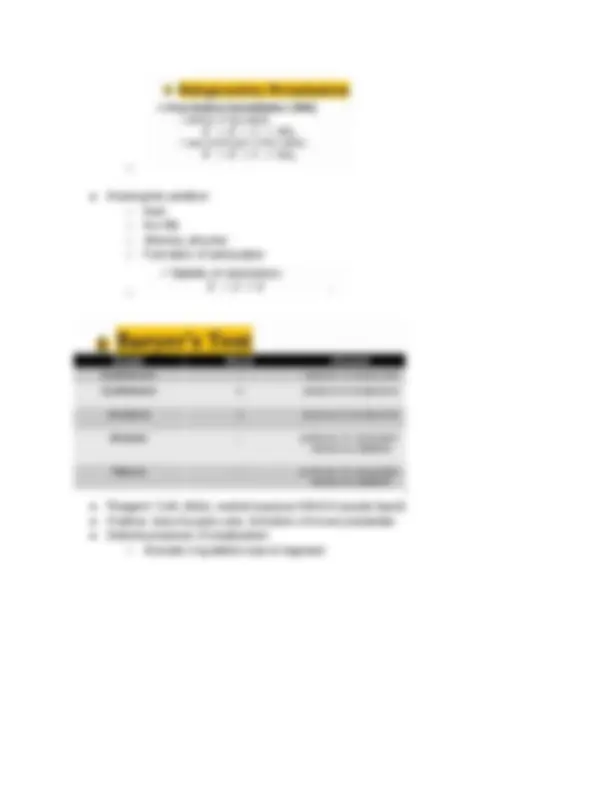
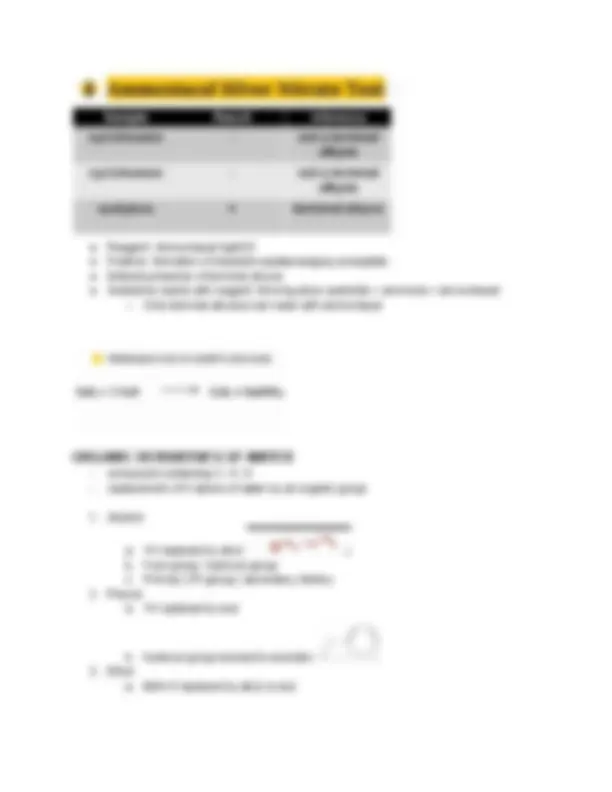
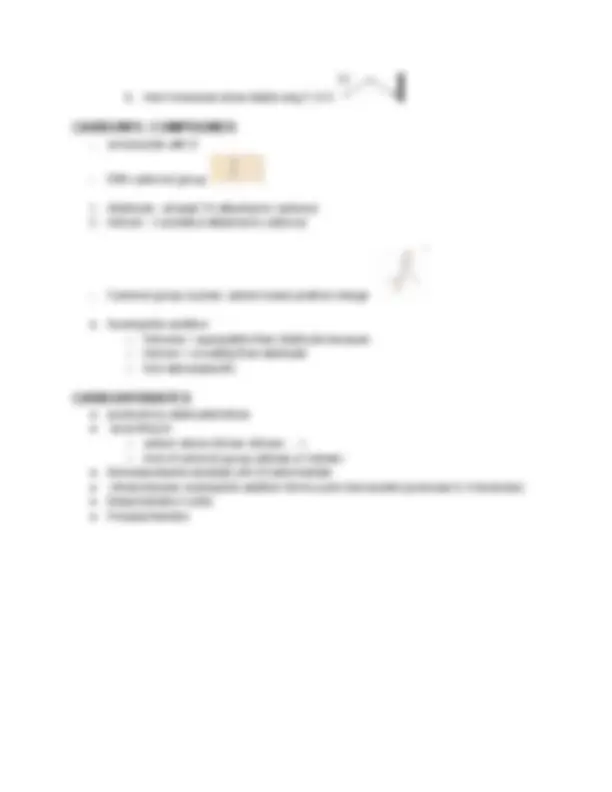
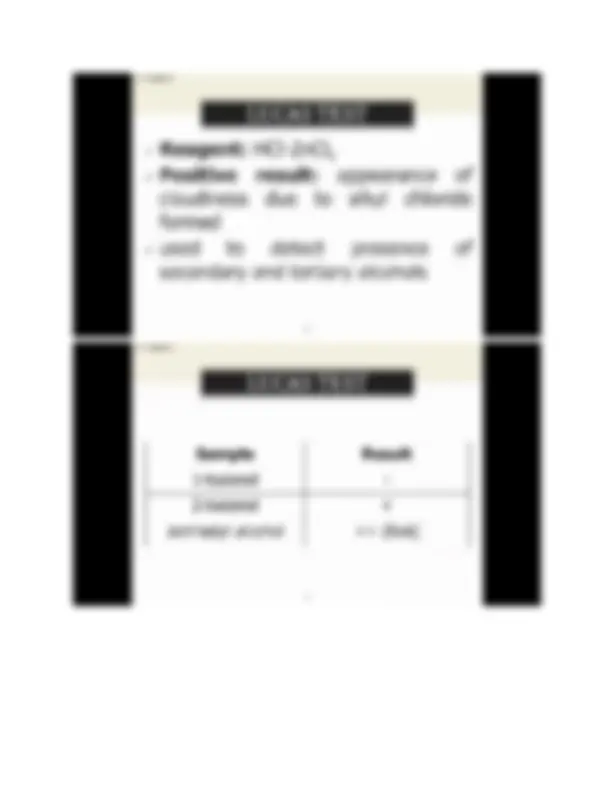
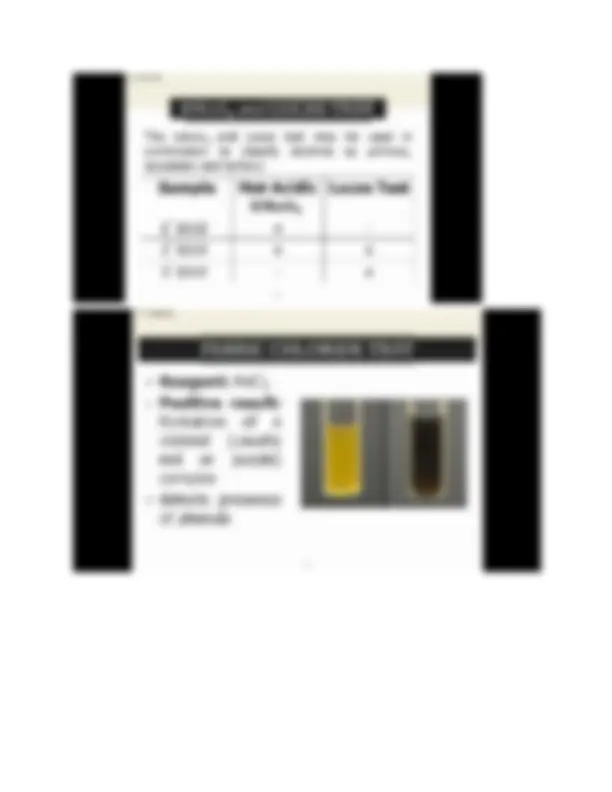
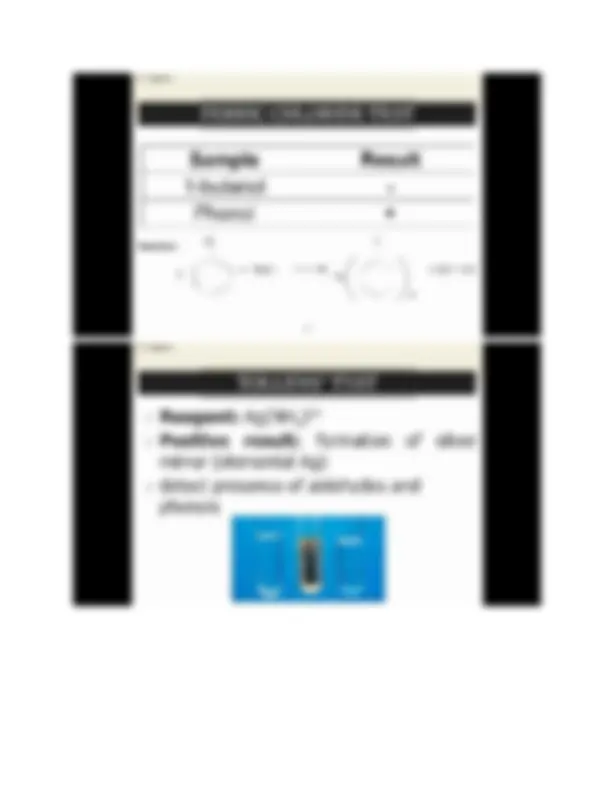
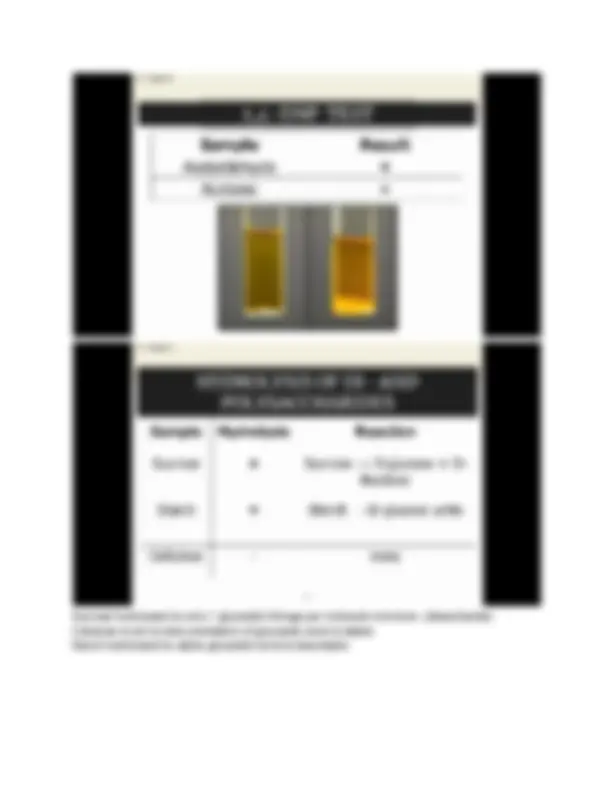
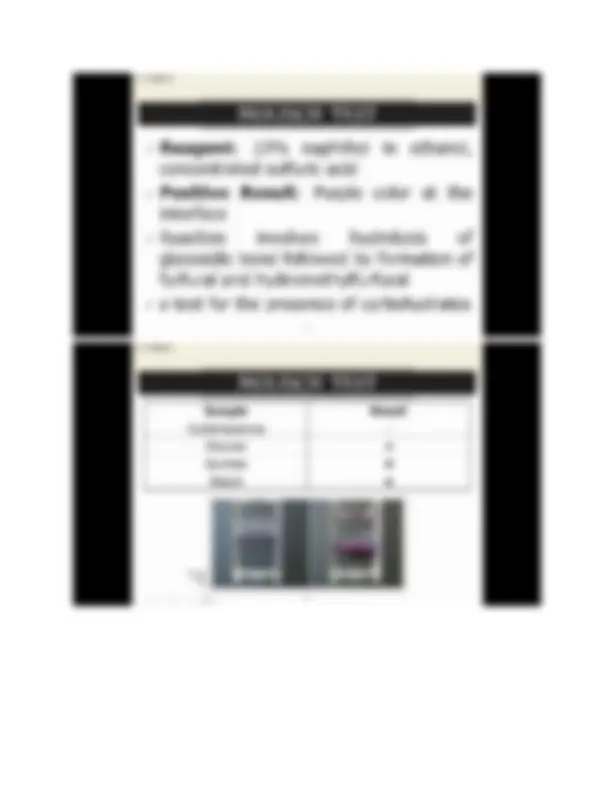



Study with the several resources on Docsity

Earn points by helping other students or get them with a premium plan


Prepare for your exams
Study with the several resources on Docsity

Earn points to download
Earn points by helping other students or get them with a premium plan
Community
Ask the community for help and clear up your study doubts
Discover the best universities in your country according to Docsity users
Free resources
Download our free guides on studying techniques, anxiety management strategies, and thesis advice from Docsity tutors
HYDROCARBONS CHEMICAL TESTS ORGANIC DERIVATIVES OF WATER CARBONYL COMPOUNDS CARBOHYDRATES
Typology: Study notes
1 / 16

This page cannot be seen from the preview
Don't miss anything!










** the only nonpolar solvent above is dichloromethane ● Hydrocarbons are soluble in dichloromethane but not in water because they are nonpolar (like dissolves like) ● Alkenes react with cold H2SO4 (Sulfonation) ● Reagent: Bromine in dichloromethane (red orange liquid) ● Positive: loss of red orange color ○ dichloromethane is a good solvent because it is nonpolar & inert towards hydrocarbon and bromine ● Free radical substitution ○ requires light ○ produce HBr as one of the products ■ How to test kung may HBr? Pag nag red ang blue litmus paper ○ Alkanes, alkylbenzene; toluene at faster rate
● Reagent: Ammoniacal AgNO ● Positive: formation of insoluble substance/gray precipitate ● Detects presence of terminal alkyne ● Acetylene reacts with reagent, forming silver acetylide + ammonia + ammoniacal ○ Only terminal alkynes can react with ammoniacal
b. Inert molecules since stable ang C-O-C
● polyhydroxy aldehyde/ketone ● according to: ○ carbon atoms (triose, tetrose … ) ○ kind of carbonyl group (aldose or ketose) ● Monosaccharide simplest unit of carbohydrate ● Intramolecular nucleophilic addition forms cyclic hemiacetal (pyranose-5; 6-furanose) ● Disaccharides 2 units ● Polysaccharides
Sucrose hydrolysed bc only 1 glycosidic linkage per molecule is broken. (disaccharide) Cellulose is not bc beta orientation of glycosidic bond is stable Starch hydrolysed bc alpha glycosidic bond is less stable
All monosaccharide + (glucose, fructose) due to aldehyde group for oxidation Lactose potential carbonyl group is not used/free in glycosidic bond Sucrose: both potential carbonyl groups are used in glycosidic bond